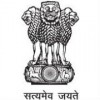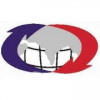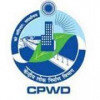
Filter interviews by
Council of Scientific and Industrial Research Interview Questions and Answers
27 Interview questions
My future plan is to continue gaining experience and expertise in research, eventually leading my own projects and contributing to significant scientific advancements.
Continue working as a Research Associate to gain more hands-on experience
Pursue further education or certifications to enhance my skills and knowledge
Network with professionals in the field to explore new opportunities
Eventually lead my own research ...
To prepare a cis structure, one must consider the arrangement of atoms around a double bond.
Identify the double bond in the molecule
Ensure that the substituents attached to the double bond are on the same side of the molecule
Use wedge-and-dash notation to show the spatial arrangement of atoms
Cis isomer has similar groups on the same side of the double bond
Example: In cis-2-butene, both methyl groups are on the sam...
Phenol group contains one benzene ring.
Phenol group has one benzene ring attached to a hydroxyl group (-OH).
The benzene ring in phenol is responsible for its aromatic properties.
Examples of compounds with phenol group include phenol itself, tyrosine, and salicylic acid.
The endgred species of Russian Far East is the Amur leopard.
The Amur leopard is a critically endangered species found in the Russian Far East.
It is one of the rarest big cats in the world, with a population of less than 100 individuals.
The Amur leopard is known for its beautiful coat, which features rosette-shaped spots.
Its habitat is primarily in the temperate forests of eastern Russia, near the border with China...
A perfect gas is an idealized model of a gas that meets certain conditions.
The gas consists of a large number of tiny particles that are in constant random motion.
The particles are assumed to have no volume.
The particles do not interact with each other except through perfectly elastic collisions.
The gas is assumed to be in a closed container.
The temperature, pressure, and volume of the gas are related by the ideal...
3D refers to three-dimensional, which is a representation of objects or environments that have height, width, and depth.
3D is a term used to describe objects or environments that appear to have depth and dimension.
It is a visual representation that adds depth to a flat surface, creating a more realistic and immersive experience.
3D can be achieved through various techniques such as stereoscopy, computer graphics, o...
Engineering drawing is a visual representation of an object or structure, created using technical drawing techniques.
Engineering drawing is used to communicate design and manufacturing information.
It includes details such as dimensions, materials, and assembly instructions.
Common types of engineering drawings include mechanical, electrical, and architectural drawings.
Engineering drawings are typically created usin...
One disadvantage of supercritical boilers is their high cost.
Supercritical boilers are expensive to manufacture and install.
They require high-quality materials to withstand high pressures and temperatures.
Maintenance and repair costs for supercritical boilers are also high.
Supercritical boilers may have limited flexibility in terms of load changes.
They require a longer startup time compared to subcritical boilers.
Mechanical engineers use various computer programs for design, simulation, and analysis.
CAD software for designing and modeling mechanical components and systems
Finite element analysis (FEA) software for simulating and analyzing stresses and deformations in mechanical structures
Computational fluid dynamics (CFD) software for analyzing fluid flow and heat transfer in mechanical systems
Programming languages such as ...
Gate valves are used to control the flow of fluids by opening or closing a gate. There are several types of gate valves.
Rising stem gate valve
Non-rising stem gate valve
Wedge gate valve
Parallel gate valve
Knife gate valve
Slab gate valve
Council of Scientific and Industrial Research Interview Experiences
24 interviews found
I applied via Company Website and was interviewed in May 2024. There was 1 interview round.
(2 Questions)
- Q1. Self introduction
- Q2. Strengths of urs
(2 Questions)
- Q1. Last project details
- Q2. What is future plan
- Ans.
My future plan is to continue gaining experience and expertise in research, eventually leading my own projects and contributing to significant scientific advancements.
Continue working as a Research Associate to gain more hands-on experience
Pursue further education or certifications to enhance my skills and knowledge
Network with professionals in the field to explore new opportunities
Eventually lead my own research proje...
Interview Preparation Tips
I applied via Walk-in and was interviewed before Aug 2023. There were 2 interview rounds.
They ask questions sometimes candidates was pre decided... sometimes they pic random ones but most of the time candidate is pre decided
(2 Questions)
- Q1. Hello just check your qualifications
- Q2. Hello ask about your experience
Interview Preparation Tips
I applied via Job Portal and was interviewed in Apr 2023. There were 2 interview rounds.

(4 Questions)
- Q1. What's is the type of coal How it's prepared
- Ans.
Coal is a fossil fuel that comes in different types such as anthracite, bituminous, and lignite. It is prepared through mining, crushing, and washing.
Coal is classified into different types based on its carbon content and energy output
Anthracite is the highest quality coal with the highest carbon content
Bituminous coal is the most commonly used type for electricity generation
Lignite is the lowest quality coal with the ...
- Q2. Which type of coal used in India
- Ans.
The main types of coal used in India are lignite, bituminous, and anthracite.
Lignite is the lowest quality coal with high moisture content and low carbon content.
Bituminous coal is the most commonly used type in India, with medium carbon content and high calorific value.
Anthracite is the highest quality coal with low moisture content and high carbon content, but it is less commonly used in India.
India also imports coki...
- Q3. How many benzene rings present phenol group
- Ans.
Phenol group contains one benzene ring.
Phenol group has one benzene ring attached to a hydroxyl group (-OH).
The benzene ring in phenol is responsible for its aromatic properties.
Examples of compounds with phenol group include phenol itself, tyrosine, and salicylic acid.
- Q4. How to prepared cis structure
- Ans.
To prepare a cis structure, one must consider the arrangement of atoms around a double bond.
Identify the double bond in the molecule
Ensure that the substituents attached to the double bond are on the same side of the molecule
Use wedge-and-dash notation to show the spatial arrangement of atoms
Cis isomer has similar groups on the same side of the double bond
Example: In cis-2-butene, both methyl groups are on the same sid...
Interview Preparation Tips
(1 Question)
- Q1. Tell me yourself
I applied via Walk-in and was interviewed in Nov 2023. There were 2 interview rounds.
PROFIT AND LOSS, AND OTHER SIMILAR CHAPTERS
(1 Question)
- Q1. NORMAL AND SIMPLE QUES
I applied via Walk-in and was interviewed before Oct 2023. There were 2 interview rounds.
Written Multiple choice questions from my own subject plus reasoning questions.
(2 Questions)
- Q1. Small self Introductory session
- Q2. Botanical names of various plants and fruits, specially about regional ones.
- Ans.
Botanical names of plants and fruits are important for identification and classification purposes.
Botanical name for apple is Malus domestica
Botanical name for banana is Musa acuminata
Botanical name for mango is Mangifera indica
Botanical name for rose is Rosa
Botanical name for tulsi is Ocimum tenuiflorum
I applied via Walk-in and was interviewed in Feb 2022. There were 2 interview rounds.

(19 Questions)
- Q1. Tell me about yourself
- Ans. Myself SUMIT HALDER, I LEAVE IN DURGAPUR, WEST BENGAL. I PASSED DIPLOMA IN MECHANICAL ENGINEERING AT 2017, NEXT I PASSED B.TECH IN MECHANICAL ENGINEERING AT 2022. I KNOW AUTOCAD MECHANICAL, BASIC COMPUTER, CATIA. I HAVE 08 MONTH EXPERIENCE AT CSIR-CMERI IN PROJECT ASSISTANT LEVEL 1.
- Q2. Why did you choose to study mechanical engineering?
- Q3. Without any reason I chose the mechanical engineering. Only when I enter the class I came to know that mechanical engineering have only boys. I am shocked. And I accept it. And recently they said that mos...
- Q4. What is 3D? Explain that.
- Ans.
3D refers to three-dimensional, which is a representation of objects or environments that have height, width, and depth.
3D is a term used to describe objects or environments that appear to have depth and dimension.
It is a visual representation that adds depth to a flat surface, creating a more realistic and immersive experience.
3D can be achieved through various techniques such as stereoscopy, computer graphics, or hol...
- Q5. What are the different types of brakes?
- Ans.
There are several types of brakes including disc brakes, drum brakes, regenerative brakes, and hydraulic brakes.
Disc brakes use calipers to squeeze brake pads against a disc rotor to slow down or stop the vehicle.
Drum brakes use brake shoes that press against the inside of a drum to create friction and slow down or stop the vehicle.
Regenerative brakes convert the kinetic energy of the vehicle into electrical energy, wh...
- Q6. What is called engineering drawing?
- Ans.
Engineering drawing is a visual representation of an object or structure, created using technical drawing techniques.
Engineering drawing is used to communicate design and manufacturing information.
It includes details such as dimensions, materials, and assembly instructions.
Common types of engineering drawings include mechanical, electrical, and architectural drawings.
Engineering drawings are typically created using CAD...
- Q7. What are the different types of gate valves?
- Ans.
Gate valves are used to control the flow of fluids by opening or closing a gate. There are several types of gate valves.
Rising stem gate valve
Non-rising stem gate valve
Wedge gate valve
Parallel gate valve
Knife gate valve
Slab gate valve
- Q8. What are the two types of cooling towers?
- Ans.
The two types of cooling towers are natural draft cooling towers and mechanical draft cooling towers.
Natural draft cooling towers use natural air circulation to cool the water, with no mechanical fans.
Mechanical draft cooling towers use mechanical fans to circulate air and cool the water.
Examples of natural draft cooling towers include hyperbolic cooling towers, while examples of mechanical draft cooling towers include...
- Q9. What are the vital conditions of a perfect gas?
- Ans.
A perfect gas is an idealized model of a gas that meets certain conditions.
The gas consists of a large number of tiny particles that are in constant random motion.
The particles are assumed to have no volume.
The particles do not interact with each other except through perfectly elastic collisions.
The gas is assumed to be in a closed container.
The temperature, pressure, and volume of the gas are related by the ideal gas ...
- Q10. The vital conditions of a perfect gas are: It needs to satisfy the state equation. The specific heat should remain constant.
- Ans.
The vital conditions of a perfect gas are state equation and constant specific heat.
Perfect gas must satisfy state equation
Specific heat should remain constant
Examples: Ideal gas, real gas at low pressure and high temperature
- Q11. What do you mean by torque?
- Ans.
Torque is a measure of the twisting force that causes rotation.
Torque is a vector quantity, meaning it has both magnitude and direction.
It is calculated by multiplying the force applied by the distance from the axis of rotation.
Units of torque are typically expressed in Newton-meters (Nm) or pound-feet (lb-ft).
Examples of torque include the force applied by a wrench to tighten a bolt or the rotational force of an engin...
- Q12. Torque is the measure of force needed to rotate an object.
- Q13. Why is Nitrogen used in welding? Which gases can be used in welding instead of nitrogen?
- Ans.
Nitrogen is used in welding to prevent oxidation and improve weld quality.
Nitrogen is an inert gas that does not react with the metal being welded, preventing oxidation and contamination.
It creates a protective atmosphere around the weld, reducing the risk of defects and improving the overall quality.
Nitrogen can be used in various welding processes such as TIG (tungsten inert gas) and laser welding.
Other gases that ca...
- Q14. What is the mechanical advantage of a double pulley?
- Ans.
The mechanical advantage of a double pulley is the ratio of the output force to the input force.
A double pulley has two grooved wheels, allowing a rope or cable to pass through.
The mechanical advantage is determined by the number of supporting ropes or cables.
With a double pulley, the mechanical advantage is equal to the number of supporting ropes or cables.
For example, if there are two supporting ropes, the mechanical...
- Q15. What is a universal coupling?
- Ans.
A universal coupling is a mechanical device that connects two rotating shafts allowing them to move in any direction.
It is also known as a universal joint or U-joint.
It is commonly used in automobiles to connect the drive shaft to the transmission.
It allows for the transmission of power between two shafts that are not in a straight line.
It consists of a cross-shaped component with four bearings that allow for movement ...
- Q16. A universal coupling is a pair of hinges connected by a cross shaft. The shaft is used to connect two shafts with axes inclined to each other.
- Q17. What is a disadvantage of supercritical boilers?
- Ans.
One disadvantage of supercritical boilers is their high cost.
Supercritical boilers are expensive to manufacture and install.
They require high-quality materials to withstand high pressures and temperatures.
Maintenance and repair costs for supercritical boilers are also high.
Supercritical boilers may have limited flexibility in terms of load changes.
They require a longer startup time compared to subcritical boilers.
- Q18. What type of computer programs does a mechanical engineer use?
- Ans.
Mechanical engineers use various computer programs for design, simulation, and analysis.
CAD software for designing and modeling mechanical components and systems
Finite element analysis (FEA) software for simulating and analyzing stresses and deformations in mechanical structures
Computational fluid dynamics (CFD) software for analyzing fluid flow and heat transfer in mechanical systems
Programming languages such as MATLA...
- Q19. A mechanical engineer uses software like SolidWorks, Autodesk AutoCAD, and CATIA
Interview Preparation Tips
If you know this question answer, answer it and if you don't give any wrong answer.

(2 Questions)
- Q1. Which of the following is not an adhesion protien?
- Ans. Laminin was not, out of other options given
- Q2. Which of the following is an endgred spicies of Russian Far East
- Ans.
The endgred species of Russian Far East is the Amur leopard.
The Amur leopard is a critically endangered species found in the Russian Far East.
It is one of the rarest big cats in the world, with a population of less than 100 individuals.
The Amur leopard is known for its beautiful coat, which features rosette-shaped spots.
Its habitat is primarily in the temperate forests of eastern Russia, near the border with China and ...
Interview Preparation Tips
- Biosynthesis, Plant biology,
- Cell biology,Gaptitudes
- Diversity of life forms
I applied via LinkedIn and was interviewed before May 2023. There were 3 interview rounds.
GD topic - 70 hours work per week
Basic aptitude tests
(1 Question)
- Q1. What drew you to this role?
Top trending discussions






Council of Scientific and Industrial Research Interview FAQs
The duration of Council of Scientific and Industrial Research interview process can vary, but typically it takes about less than 2 weeks to complete.
Tell us how to improve this page.
Council of Scientific and Industrial Research Interviews By Designations
- Council of Scientific and Industrial Research Project Associate Interview Questions
- Council of Scientific and Industrial Research Project Assistant 1 Interview Questions
- Council of Scientific and Industrial Research Project Associate 1 Interview Questions
- Council of Scientific and Industrial Research Project Intern Interview Questions
- Council of Scientific and Industrial Research Research Associate Interview Questions
- Council of Scientific and Industrial Research Internship Trainee Interview Questions
- Council of Scientific and Industrial Research Project Assistant Interview Questions
- Council of Scientific and Industrial Research Summer Intern Interview Questions
- Show more
Interview Questions for Popular Designations
Overall Interview Experience Rating
based on 13 interview experiences
Difficulty level
Duration
Interview Questions from Similar Companies
Council of Scientific and Industrial Research Reviews and Ratings
based on 297 reviews
Rating in categories
|
Project Associate
175
salaries
| ₹2.8 L/yr - ₹5.1 L/yr |
|
Project Assistant
111
salaries
| ₹2 L/yr - ₹4.5 L/yr |
|
Senior Research Fellow
66
salaries
| ₹3.6 L/yr - ₹6.3 L/yr |
|
Project Associate 1
54
salaries
| ₹3 L/yr - ₹4.6 L/yr |
|
Project Assistant II
41
salaries
| ₹2 L/yr - ₹4.3 L/yr |

Government of India

National Informatics Centre

Central Reserve Police Force

Ministry of Defence
- Home >
- Interviews >
- Council of Scientific and Industrial Research Interview Questions













